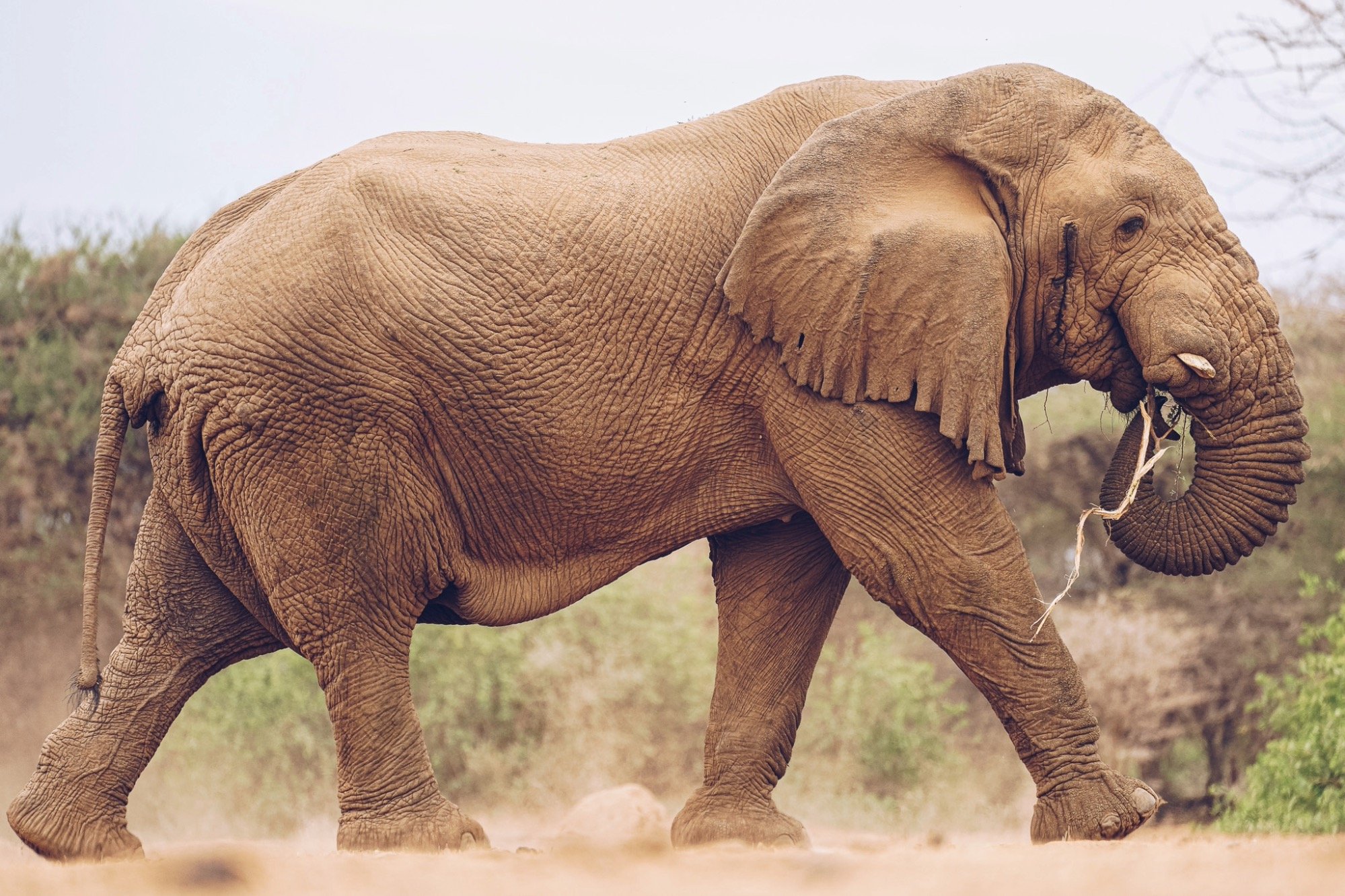Giants of the Savannah: Unveiling the Secrets of African Elephants
Welcome to an enchanting journey into the world of the African Elephant, a magnificent creature that symbolises the grandeur and complexity of the African wilderness.
These gentle giants, known for their immense size, sophisticated social structures, and deep intelligence, play a vital role in their ecosystems. Our exploration aims to shed light on their unique behaviors, the intricate dynamics within their communities, and the crucial conservation efforts needed to ensure their survival.
Intriguing Quick Facts
Largest Land Animals: Standing as the world's largest land animals, male African Elephants can reach heights of up to 3 meters at the shoulder and weigh as much as 6,000 kilograms. Their impressive stature is a defining characteristic of these majestic creatures.
Herbivorous Diet: These elephants have an immense appetite, requiring up to 170 kilograms of plant material daily. Their diet includes a wide range of vegetation, such as leaves, bark, fruits, and roots, crucial for their sustenance and overall health.
Longevity: Remarkably, they can live for 60-70 years in the wild. Their longevity is often linked to the health of their teeth, which are essential for their herbivorous diet.
Matriarchal Societies: Their social structure is centered around matriarchal groups, usually led by the oldest and most experienced female. This matriarchal leadership plays a crucial role in the survival and well-being of the group.
Communication: Elephants communicate using a range of vocalizations, including infrasound, which is beyond human hearing. This form of communication is essential for maintaining group cohesion over long distances.
Versatile Trunk: The elephant's trunk is a marvel of nature, serving as a multi-functional tool for breathing, smelling, touching, and grasping. It is a key aspect of their interaction with the environment and each other.
Tusks for Various Purposes: Both male and female African Elephants grow tusks, which serve multiple purposes. These include digging for water, foraging for food, and serving as tools for self-defense.
Vulnerability and Conservation: Classified as vulnerable, African Elephants face threats from habitat loss and poaching for ivory. The need for robust conservation efforts is paramount to ensure their survival and the protection of their natural habitats.
Daily Life and Dietary Habits
An African elephant's daily life revolves significantly around feeding to sustain its massive body. They are known to feed for up to 14 hours a day, a testament to their need for a substantial amount of food. Depending on the season, their diet shifts, focusing on grass, leaves, and shoots during wetter months and roots, bark, and stems during drier periods. This varied diet not only meets their nutritional needs but also plays a significant role in shaping their natural habitat. Their feeding habits have ecological benefits, such as seed dispersal and vegetation control, contributing to the health of their ecosystem. However, these same feeding habits can lead to habitat degradation if not properly managed, especially in confined areas.
Social Structure and Communication
Elephant society is deeply structured and revolves around family groups, consisting of several closely related adult females and their offspring. These groups are led by a matriarch, the oldest and wisest female, who makes critical decisions and leads the group to food and water sources. Their sophisticated communication system is vital for survival, involving a complex combination of vocalizations, body language, and touch. Elephants are known for their powerful infrasonic calls, which they use to communicate over long distances. These calls are crucial for maintaining group cohesion and signaling various emotional states, both within the family group and with other elephant groups in the area. Additionally, elephants demonstrate a unique interest in bones and ivory from their species, suggesting a deep sense of social awareness and cultural significance.
Movement, Migration, and Environmental Interaction
Elephants are in constant motion, searching for food and water to sustain their large bodies. Their migration patterns are greatly influenced by the availability of these resources, and they can travel extensive distances in search of them. Their adaptability during droughts is notable; they are known to dig for water, which also benefits other wildlife. Their movement patterns are not just crucial for their survival but also play a significant role in shaping their environment, as their feeding and trampling activities can alter the landscape. This interplay between elephants and their environment highlights their role as key ecological players.
Unique Physical Features and Behaviors
The physical features of African Elephants, such as their trunks and tusks, are as fascinating as they are functional. The trunk serves as an extension of the upper lip and nose, capable of performing both delicate and powerful tasks. Their tusks, which continuously grow throughout their lives, serve various purposes from digging for water to stripping bark from trees. Additionally, elephants have developed unique behaviors for skin care, such as mud wallowing and dust bathing, which protect them from parasites and assist in temperature regulation. The large ears of the African Elephant are not just for hearing; they play a critical role in heat dissipation, helping to regulate their body temperature in the hot African climate.
Conservation and Human-Elephant Interaction
Understanding and respecting these magnificent creatures is essential for their conservation. African Elephants face numerous threats, including habitat loss due to human expansion and poaching for their ivory. Protecting these animals and their habitats is crucial for their survival and the ecological balance of their environments. Conservation efforts must focus on mitigating human-elephant conflicts, protecting elephant habitats, and understanding and preserving the intricate social structures of these magnificent creatures.
The African elephant is a symbol of nature's grandeur, embodying the beauty and complexity of the wild. Their ecological importance, combined with their intelligent and social nature, makes them a fascinating subject for study and conservation. As we continue to learn and appreciate these majestic creatures, it is our responsibility to ensure their protection and preservation for generations to come.


